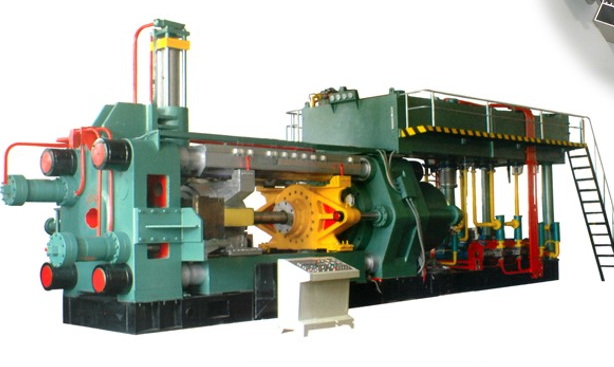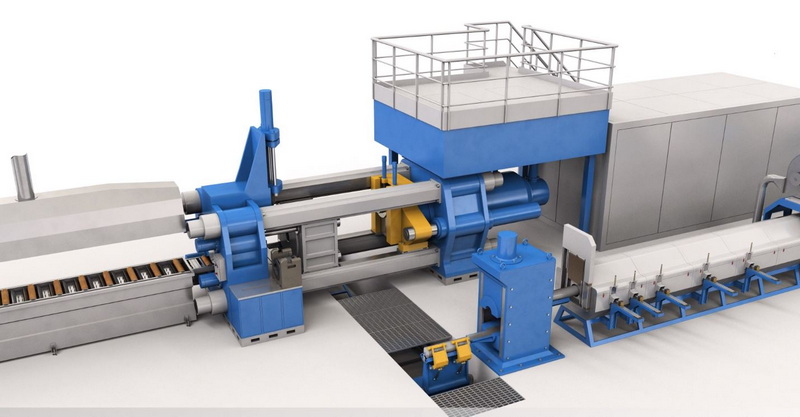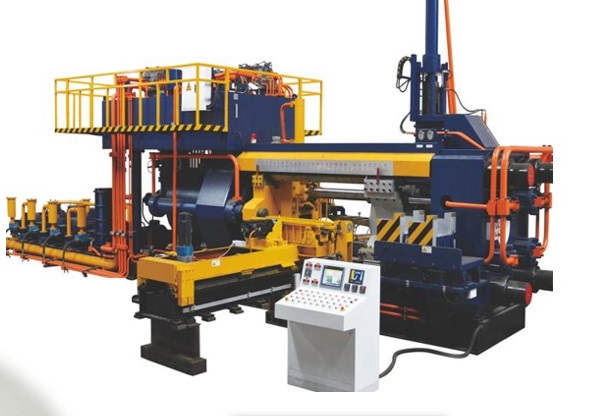Content Menu
● Introduction to Aluminum Extrusion Press
● Understanding the Aluminum Extrusion Process
>> Key Components of an Aluminum Extrusion Press
● High-Volume Aluminum Extrusion: Meeting Industrial Demands
>> Benefits of High-Volume Aluminum Extrusion
● Hydraulic Extrusion Press: The Powerhouse of Aluminum Forming
>> Advantages of Hydraulic Extrusion Presses
● Custom Aluminum Profiles: Tailoring Solutions for Every Industry
>> Applications of Custom Aluminum Profiles
● Extrusion Press Specifications: Choosing the Right Machine for Your Needs
● Automated Extrusion Technology: Enhancing Efficiency and Precision
>> Key Features of Automated Extrusion Technology
● Aluminum Profile Manufacturing: From Raw Material to Finished Product
● Extrusion Press Upgrades: Breathing New Life into Existing Equipment
>> Common Extrusion Press Upgrades
● The Future of Aluminum Extrusion Press Technology
● Conclusion
● Frequently Asked Questions
>> 1. What is the maximum size of aluminum profiles that can be produced using an extrusion press?
>> 2. How does the aluminum extrusion process compare to other metal forming techniques?
>> 3. What are the most common aluminum alloys used in extrusion processes?
>> 4. How does the speed of extrusion affect the quality of the final product?
>> 5. What maintenance is required for an aluminum extrusion press to ensure optimal performance?
Introduction to Aluminum Extrusion Press
In the world of industrial manufacturing, few processes have had as significant an impact as the aluminum extrusion press. This revolutionary technology has transformed the way we produce aluminum profiles, enabling the creation of complex shapes with unprecedented precision and efficiency. From automotive components to aerospace applications, the aluminum extrusion press has become an indispensable tool in various industries.
Understanding the Aluminum Extrusion Process
The aluminum extrusion process is a manufacturing technique that involves forcing heated aluminum billets through a die to create profiles with specific cross-sectional shapes. This process allows for the production of long, straight metal parts with consistent cross-sections. The versatility of aluminum extrusion makes it ideal for creating everything from simple tubes and rods to complex custom profiles for specialized applications.

Key Components of an Aluminum Extrusion Press
1. Main Cylinder: The heart of the extrusion press, responsible for generating the force needed to push the aluminum through the die.
2. Container: Holds the heated aluminum billet during the extrusion process.
3. Ram: Pushes the aluminum billet through the container and die.
4. Die: A precision-engineered tool that shapes the aluminum as it's forced through.
5. Billet Loader: Automates the process of loading aluminum billets into the press.
6. Runout Table: Supports and cools the extruded profile as it exits the press.
High-Volume Aluminum Extrusion: Meeting Industrial Demands
As industries continue to evolve, the demand for high-volume aluminum extrusion has skyrocketed. Modern aluminum extrusion presses are designed to meet this challenge, offering impressive throughput without compromising on quality. These advanced machines can produce hundreds of tons of extruded aluminum profiles daily, catering to the needs of automotive manufacturers, construction companies, and consumer electronics producers alike.
Benefits of High-Volume Aluminum Extrusion
1. Cost-Effectiveness: Large-scale production reduces per-unit costs.
2. Consistency: Automated processes ensure uniform quality across batches.
3. Versatility: Ability to quickly switch between different profile designs.
4. Reduced Lead Times: Faster production means quicker turnaround for customers.
5. Material Efficiency: Minimal waste compared to other manufacturing methods.
Hydraulic Extrusion Press: The Powerhouse of Aluminum Forming
At the core of most modern aluminum extrusion operations lies the hydraulic extrusion press. These powerful machines utilize hydraulic systems to generate the immense force required to push aluminum through extrusion dies. With pressing forces ranging from 500 to over 15,000 tons, hydraulic extrusion presses can handle a wide variety of aluminum alloys and profile complexities.
Advantages of Hydraulic Extrusion Presses
1. Precise Control: Hydraulic systems allow for fine-tuned pressure adjustments.
2. Scalability: Available in various sizes to suit different production needs.
3. Energy Efficiency: Modern hydraulic systems optimize power consumption.
4. Reliability: Robust design ensures long-term operation with minimal downtime.
5. Flexibility: Capable of handling both soft and hard aluminum alloys.

Custom Aluminum Profiles: Tailoring Solutions for Every Industry
One of the most significant advantages of aluminum extrusion presses is their ability to produce custom aluminum profiles. This capability has opened up a world of possibilities for designers and engineers across various industries. From intricate heat sinks for electronics to lightweight structural components for aircraft, custom aluminum profiles have become integral to innovation in product design.
Applications of Custom Aluminum Profiles
1. Automotive: Lightweight body frames and components.
2. Aerospace: Structural elements and interior fittings.
3. Construction: Window frames, door systems, and curtain walls.
4. Electronics: Heat sinks and enclosures.
5. Renewable Energy: Solar panel frames and wind turbine components.
Extrusion Press Specifications: Choosing the Right Machine for Your Needs
When selecting an aluminum extrusion press, understanding the specifications is crucial. Key factors to consider include:
1. Press Tonnage: Determines the maximum force the press can exert.
2. Container Size: Affects the size of billets that can be processed.
3. Extrusion Speed: Influences production rate and profile quality.
4. Billet Length: Impacts the length of profiles that can be produced.
5. Die Size: Determines the maximum dimensions of extruded profiles.
Automated Extrusion Technology: Enhancing Efficiency and Precision
The integration of automated systems has revolutionized the aluminum extrusion process. Modern extrusion presses feature advanced control systems, robotics, and sensors that work in harmony to optimize production. This automation not only increases throughput but also ensures consistent quality across production runs.
Key Features of Automated Extrusion Technology
1. Computer-controlled operations for precise parameter adjustments.
2. Robotic billet loading and profile handling systems.
3. Real-time monitoring of extrusion temperatures and pressures.
4. Automated quenching and stretching of extruded profiles.
5. Integrated quality control systems for immediate defect detection.
Aluminum Profile Manufacturing: From Raw Material to Finished Product
The journey from raw aluminum to finished profiles involves several critical steps:
1. Billet Preparation: Casting and preheating of aluminum billets.
2. Extrusion: Forcing heated billets through a die to create the desired profile.
3. Cooling: Controlled cooling to achieve desired material properties.
4. Stretching: Straightening the profile and relieving internal stresses.
5. Heat Treatment: Enhancing the mechanical properties of the aluminum.
6. Finishing: Surface treatments such as anodizing or powder coating.
Extrusion Press Upgrades: Breathing New Life into Existing Equipment
As technology advances, many manufacturers are opting to upgrade their existing extrusion presses rather than investing in entirely new equipment. These upgrades can significantly improve performance, energy efficiency, and product quality.
Common Extrusion Press Upgrades
1. Hydraulic system modernization for improved pressure control.
2. Installation of advanced control systems and HMIs.
3. Integration of energy-efficient motors and pumps.
4. Implementation of predictive maintenance systems.
5. Addition of automated handling and packaging systems.
The Future of Aluminum Extrusion Press Technology
As we look to the future, several trends are shaping the evolution of aluminum extrusion press technology:
1. Industry 4.0 Integration: Increased connectivity and data-driven decision-making.
2. Sustainable Manufacturing: Focus on energy efficiency and recycled aluminum use.
3. Advanced Alloys: Development of presses capable of extruding high-strength aluminum alloys.
4. Additive Manufacturing Integration: Combining extrusion with 3D printing technologies.
5. AI and Machine Learning: Predictive quality control and process optimization.
Conclusion
The aluminum extrusion press has come a long way since its inception, evolving into a sophisticated and indispensable tool in modern manufacturing. From high-volume production to custom profile creation, these machines continue to push the boundaries of what's possible with aluminum. As technology advances and industry demands grow, the future of aluminum extrusion press technology looks brighter than ever, promising even greater efficiency, precision, and innovation in the years to come.

Frequently Asked Questions
1. What is the maximum size of aluminum profiles that can be produced using an extrusion press?
Answer: The maximum size of aluminum profiles depends on the specifications of the extrusion press, particularly the container size and die dimensions. Large industrial presses can produce profiles with circumscribing circle diameters of up to 600mm or more. However, most common applications typically involve profiles with diameters ranging from 50mm to 300mm.
2. How does the aluminum extrusion process compare to other metal forming techniques?
Answer: Aluminum extrusion offers several advantages over other metal forming techniques. It allows for the creation of complex cross-sectional shapes in a single process, which is often more cost-effective than machining or casting for long, consistent profiles. Extrusion also provides excellent surface finish and dimensional accuracy. However, it may not be suitable for very small production runs or extremely large, solid components.
3. What are the most common aluminum alloys used in extrusion processes?
Answer: The most commonly used aluminum alloys for extrusion include:
- 6061: Known for its good strength and corrosion resistance.
- 6063: Offers excellent extrudability and surface finish.
- 7075: Provides high strength, often used in aerospace applications.
- 5052: Known for its good weldability and corrosion resistance.
- 3003: Offers good formability and moderate strength.
4. How does the speed of extrusion affect the quality of the final product?
Answer: Extrusion speed plays a crucial role in determining the quality of the final product. Higher speeds can increase productivity but may lead to surface defects or internal structure issues if not properly controlled. Slower speeds generally produce better surface finishes and more consistent mechanical properties but at the cost of reduced output. The optimal speed depends on factors such as the alloy being extruded, the complexity of the profile, and the desired surface finish.
5. What maintenance is required for an aluminum extrusion press to ensure optimal performance?
Answer: Regular maintenance is crucial for optimal performance of an aluminum extrusion press. Key maintenance activities include:
- Daily inspection of hydraulic systems for leaks or abnormalities.
- Regular cleaning and lubrication of moving parts.
- Periodic replacement of wear components such as container liners and dummy blocks.
- Calibration of pressure and temperature sensors.
- Inspection and maintenance of the cooling system.
- Regular die cleaning and polishing.
- Scheduled overhauls of major components like the main cylinder and pump systems.
Implementing a preventive maintenance schedule can significantly reduce downtime and extend the life of the extrusion press.













